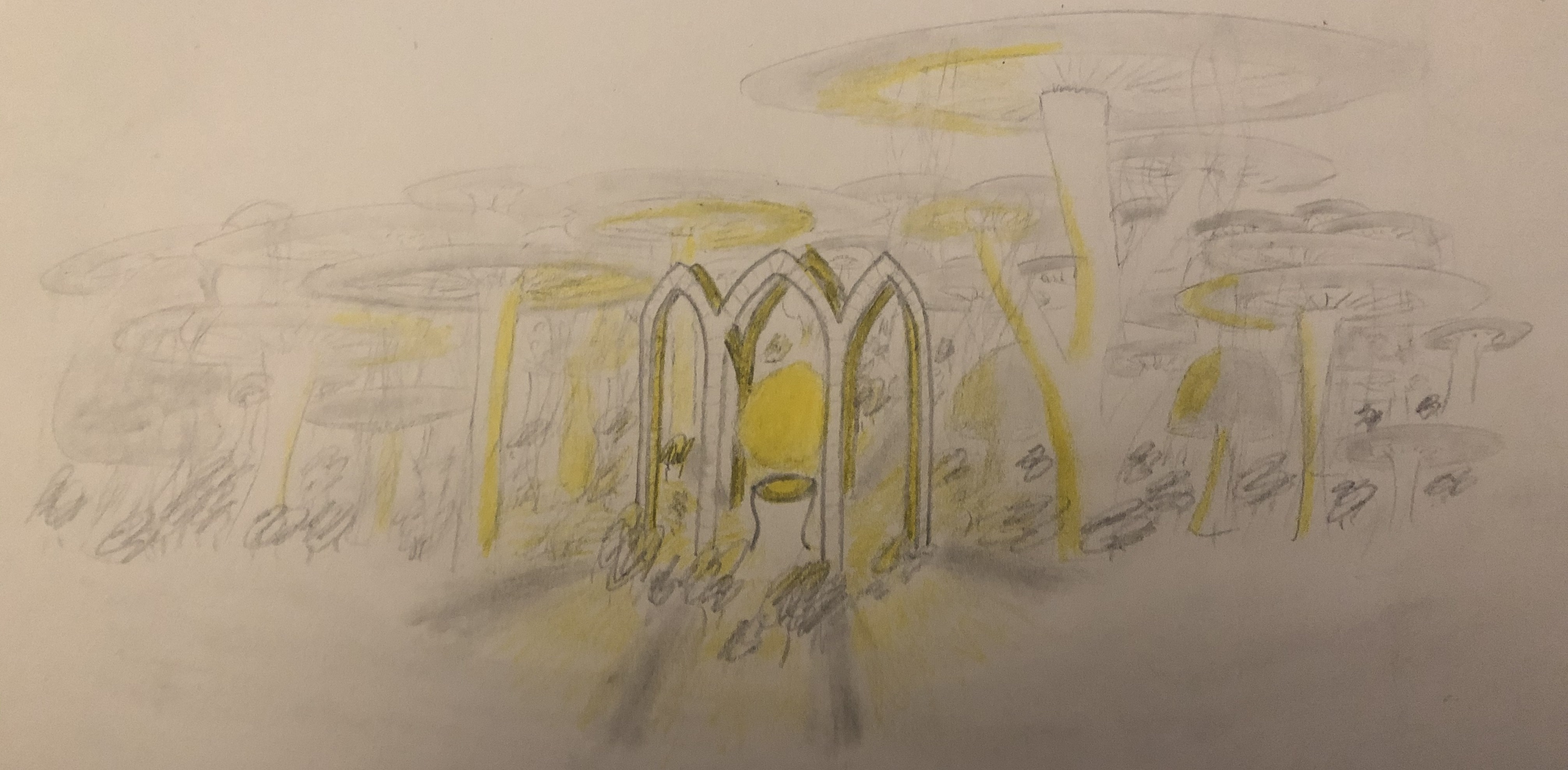Summary
The Mycelian Collective is a fungal hivemind that controls the cold, swampy region of Southern Rhovra. Its unclear when it began, but the fact that it has slowly grown over the centuries has not been missed. The colony extends deep into the Underdark, and Drow and Svirfneblin are able to live among the fungal forests where giant mushrooms block out the sun. The only native inhabitants of the Mycelian Collective are Bog Lizardfolk and Myconids. Though the Collective generally ignores outsiders who mean no harm, other dangers lurk in the shadows beneath the giant mushroom caps. As a result, few dare travel to this region unless they have something they're running away from.Adventuring
While it would be a stretch to call adventurers common in the Mycelian Collective, they make up the majority of its visitors. Lured by stories of untold riches hidden among overgrown ruins, adventurers routinely search the southern coast in the hopes of uncovering yet undiscovered treasure. Adventurers going to or from the Underdark can be seen frequently the eastern region. The northern and western areas of the Collective are practically untouched by outsiders, though more intrepid parties may travel there in search of treasure.History
Geography
The Mycelian Collective's northern border is formed by the Tasporn Mountain range, which make fungal growth impossible. At its northeast corner, there is a much smaller mountain range known to the Elves as the Onpimpe Mountains, or the Stonetails in common. The Southern Deep forms the Collective's southern border. There, numerous rocky beaches prevent large fungal growth and provide passing ships a relatively safe stopping place. A river called The Great Moving runs through the center of the territory. Its banks intermix with a fetid bog on all sides, making the riverbanks toxic for most creatures. The running water in the center of the river is still filled with spores, but it is safer.Society
Three distinct cultures exist in the Mycelian Collective. Myconids and other sentient fungi, by far the majority, don't produce physical manifestations of culture in the same way other ancestries do. Because they like a concept of intellectual individuality, all Myconids in one area will engage in work or leisure as a unit, all working toward the same end, whether that be productive or artistic. The Deepfolk are the second largest group. Those who live on the surface full-time typically have a limited connection to the hivemind due to constant exposure to spores. Bog Lizardfolk are the smallest group and live near The Great Moving. Their immunity to the spores allows them to live in this area, which suits their lifestyle as isolated apex predators. Though they can eat more complex fungal lifeforms, they prefer mammalian meat. Oter ancestries are also represented in towns on the outskirts of the collective, but there are no permanent settlements in the fungal forest itself.Fungal Effects
In addition to providing physical cover under the tall mushroom caps, the collective's psychic network disrupts scrying within its borders. The spores also have unusual effects: When most humanoids are exposed to the spores for too long, their hair falls out, their eyes turn milky white, and they can sometimes access the fungal hivemind. However, this connection works both ways, potentially compelling heavily-dosed humanoids to perform duties for the Hivemind. In the short term, the spores also produce powerful hallucinations.Politics
Though the hivemind is the dominant force in the area, it seems unable and uninterested in exert any political control over people who live The Collective has successfully choked out all forms of outside settlement within its current borders and continues to expand eastward into Taurtofna and westward into The Outlands. The Wood Elves who live on the Taurtofnan border routinely destroy new growth on the edge of their lands and occasionally fight Myconids.Economics
The fungal hivemind is self-sufficient and has no reason to engage in trade or use money. However, there are a few small trading outposts on the southern shore that are built on stilts in the shallows keep the out of reach of the destructive fungal zone. In the western region, there is some trade between denizens of the Underdark and Taurtofna, with adventurers and merchants bringing treasures and rare potion ingredients out and food and other basic supplies in.Religion
Some Drow and Svirfneblin intentionally ingest the fungal spores. Though some do this purely for medicinal or recreational purposes, others view the psychic connection it brings as a religious experience. The exact form of this religion varies, though it is rare to see a group of more than a couple dozen people.Remove these ads. Join the Worldbuilders Guild










Comments